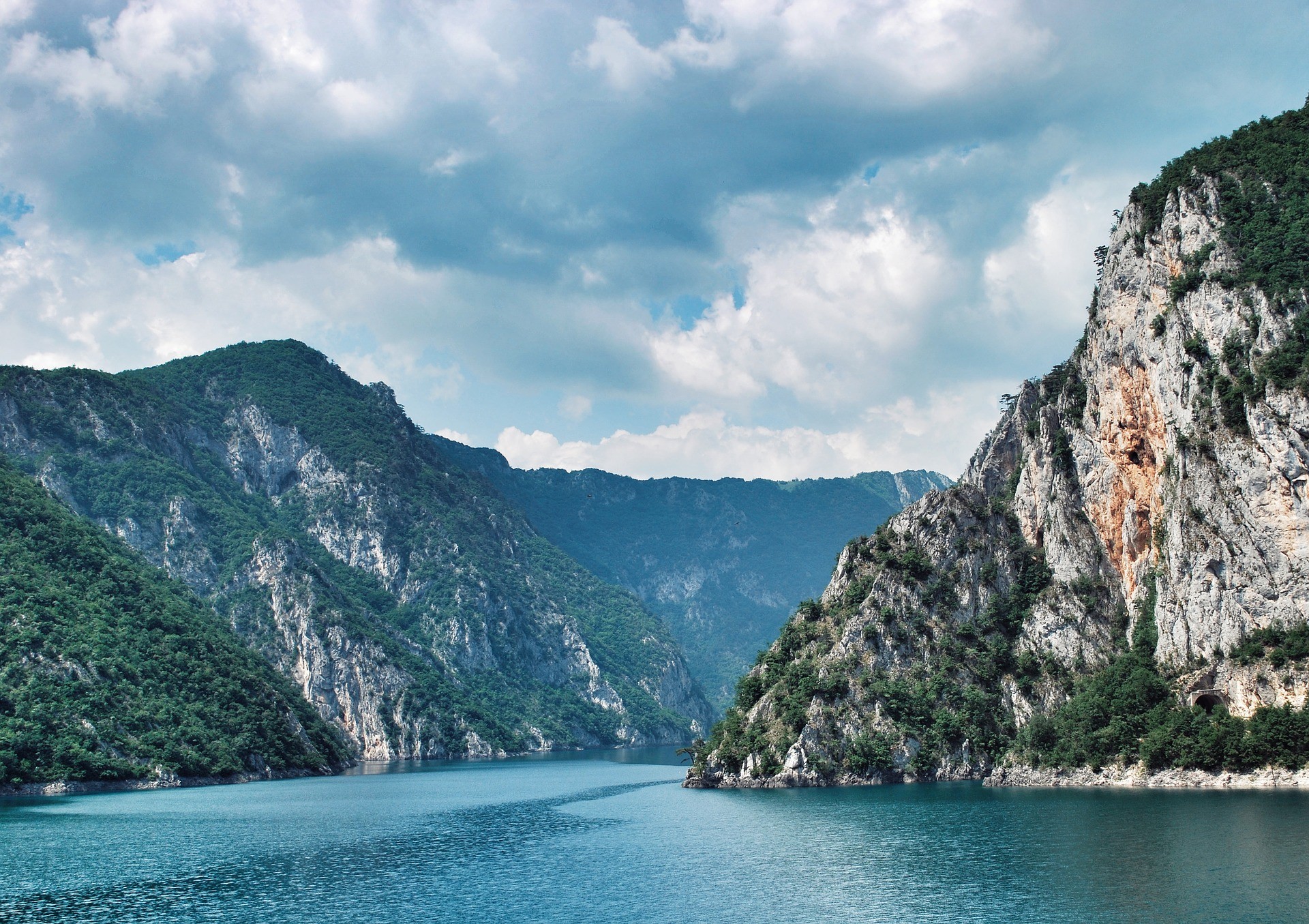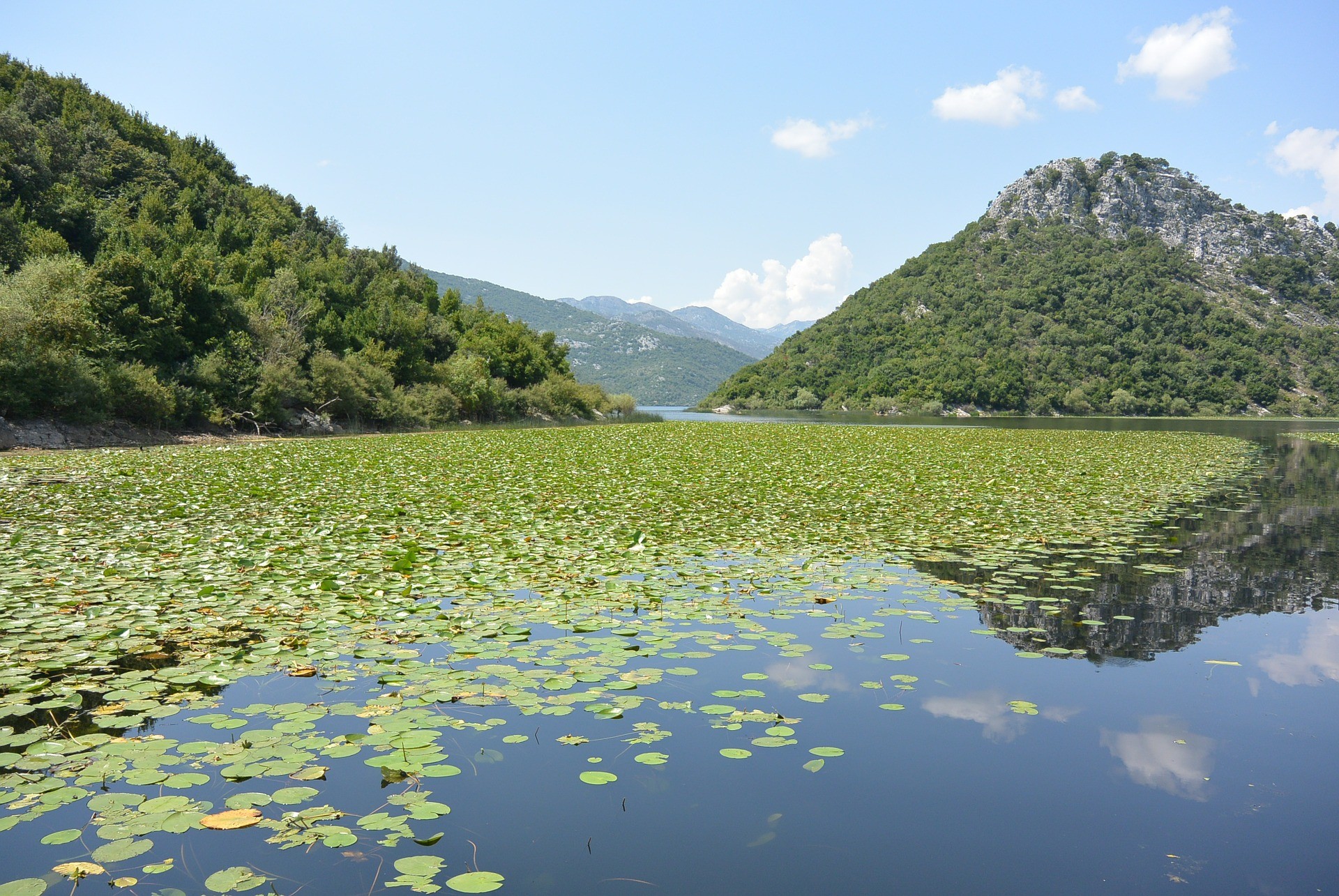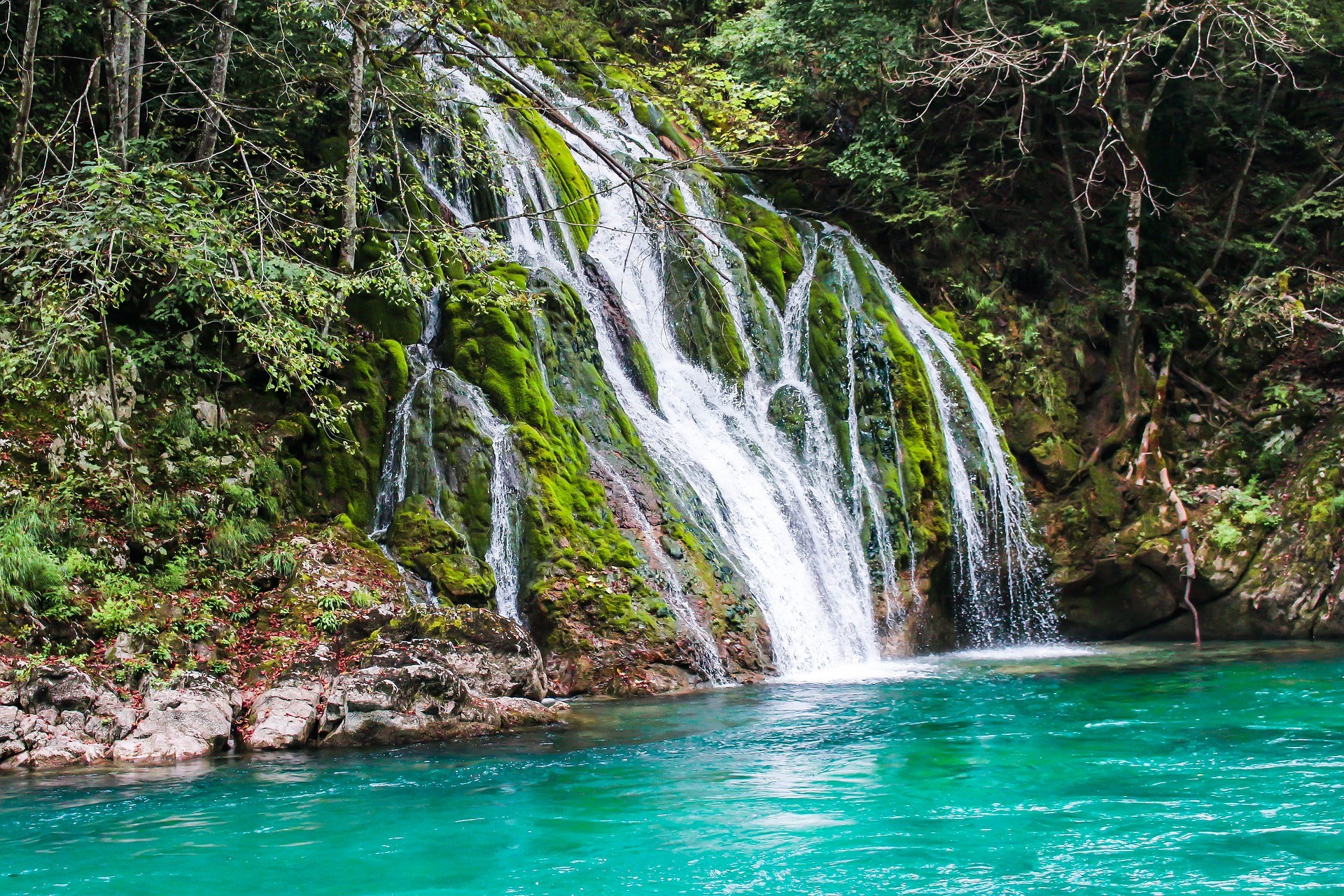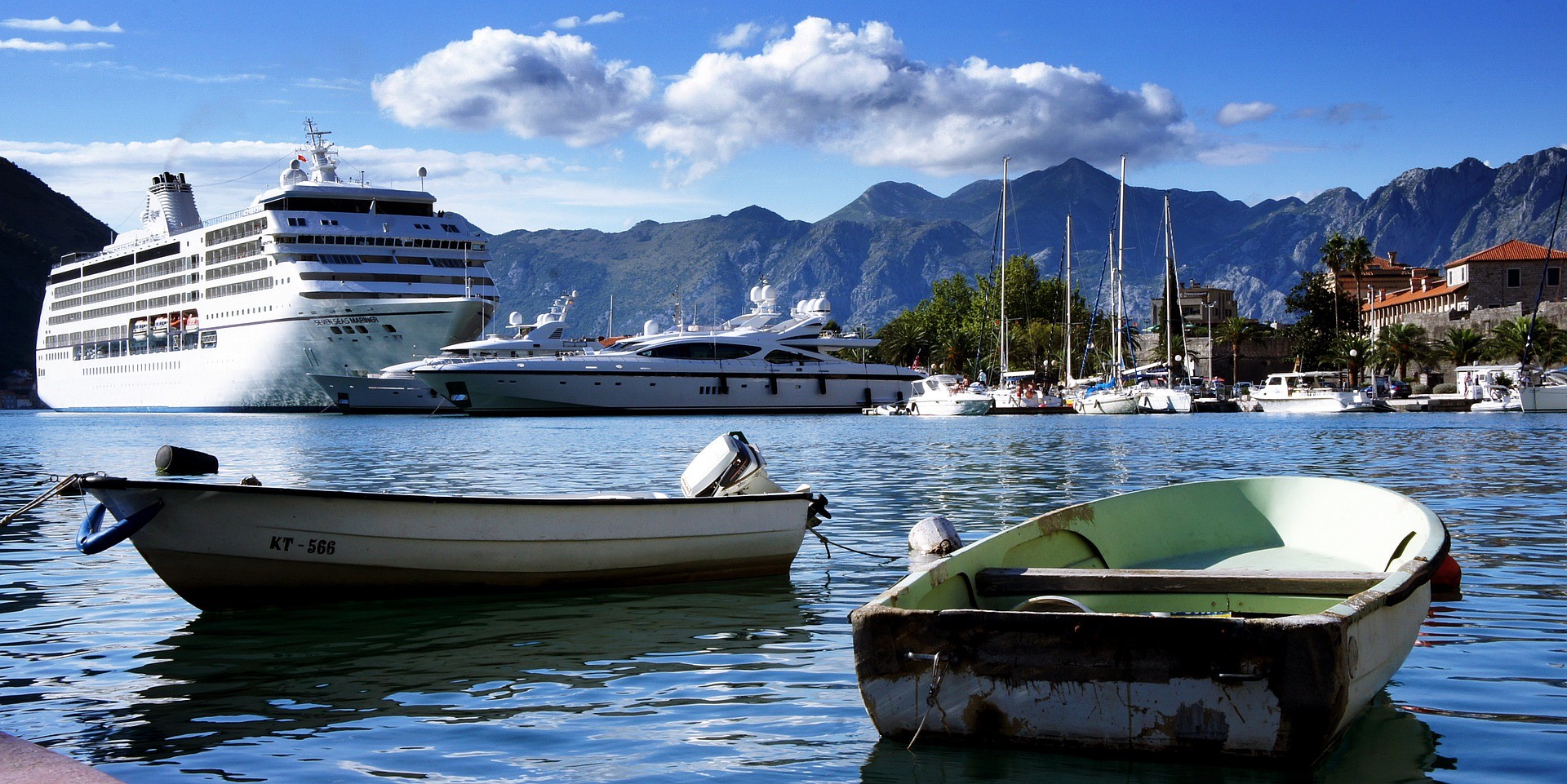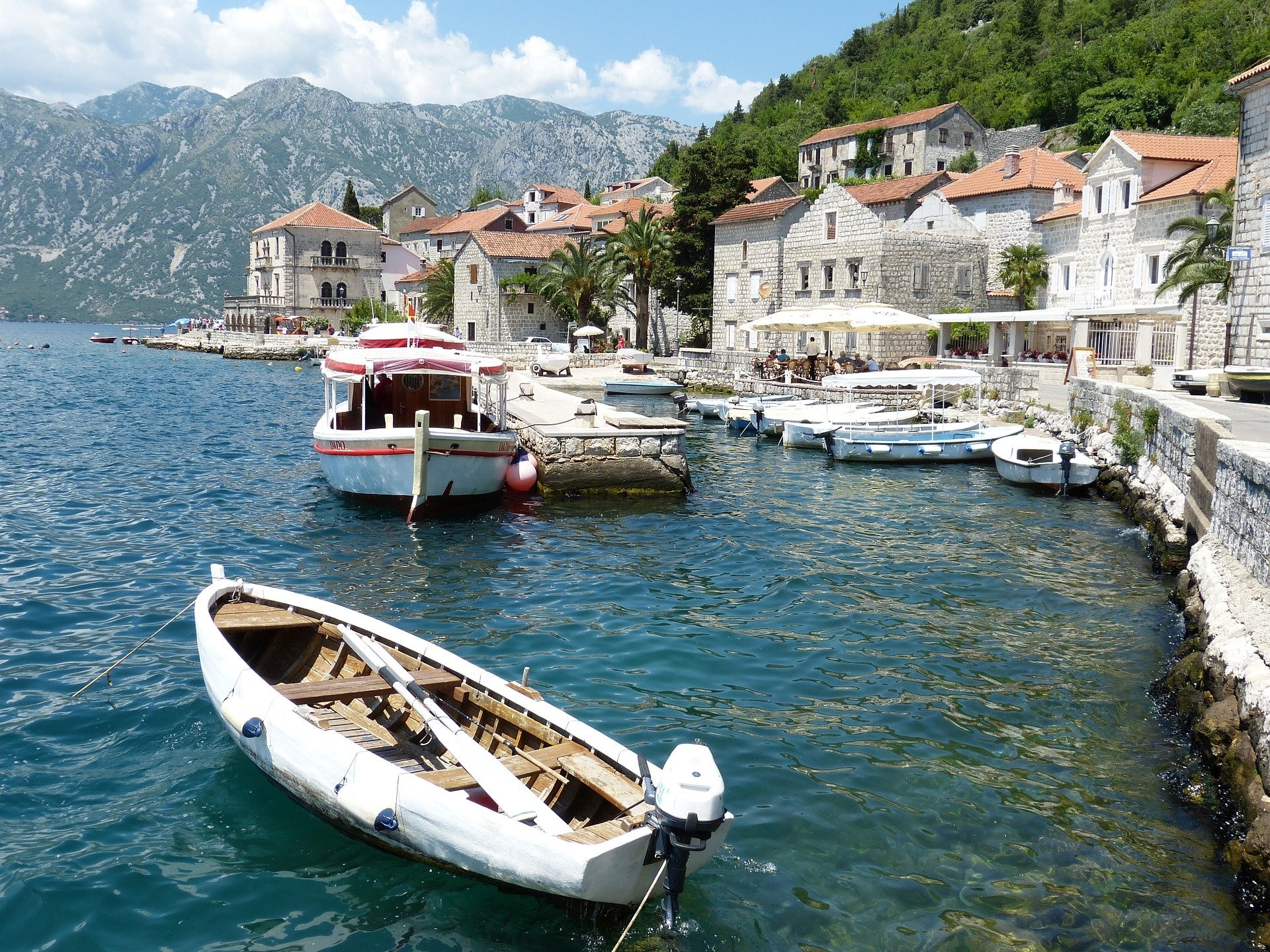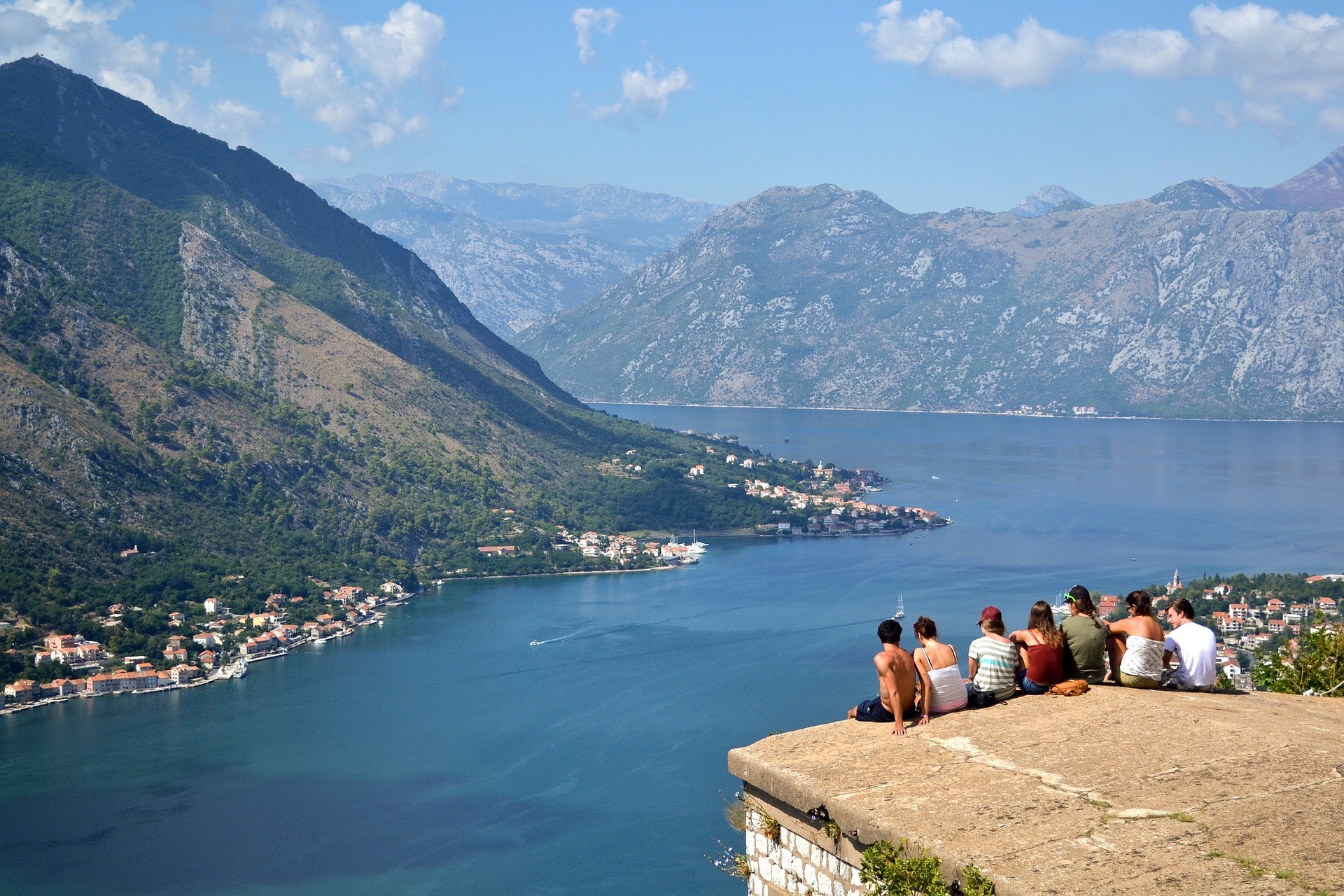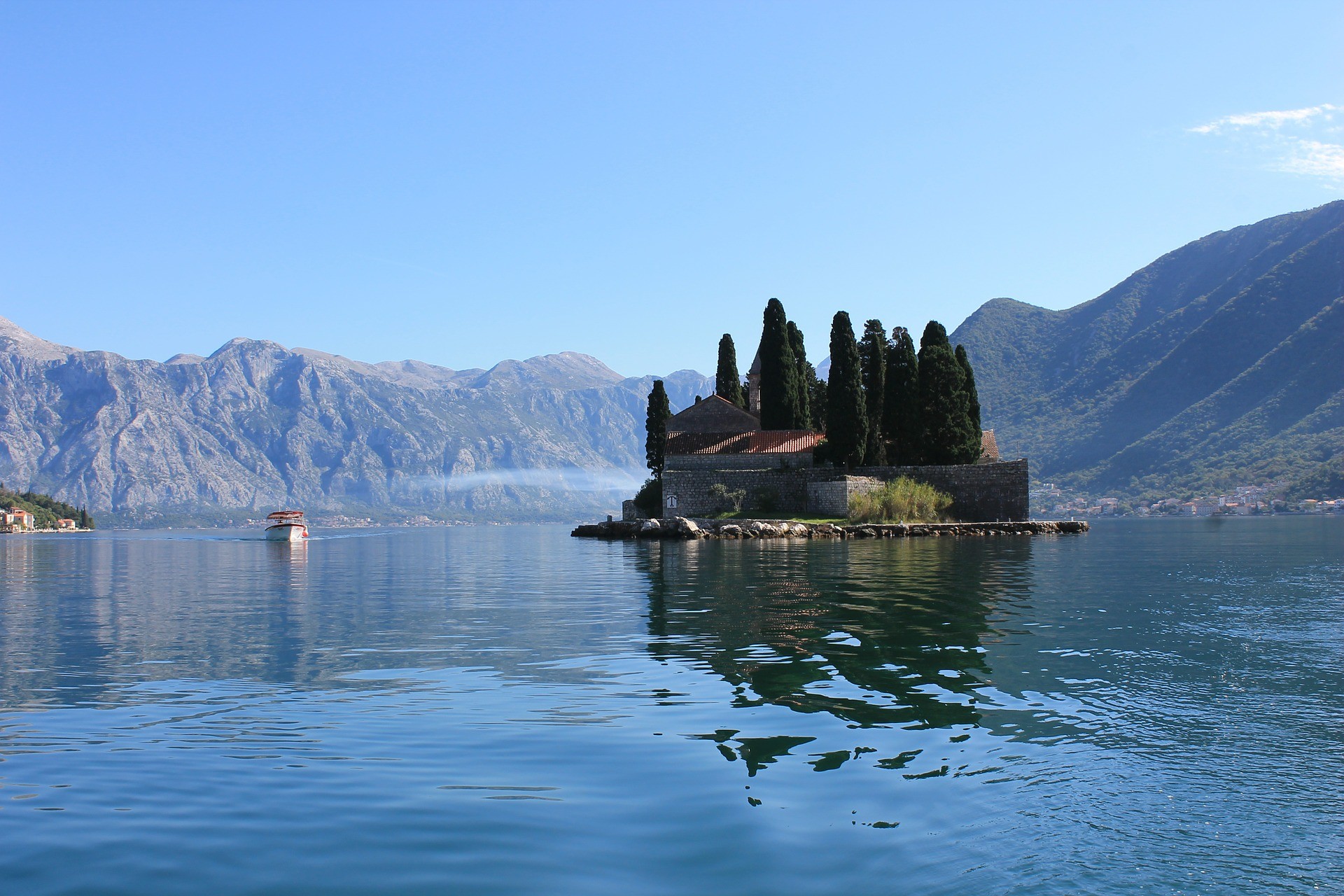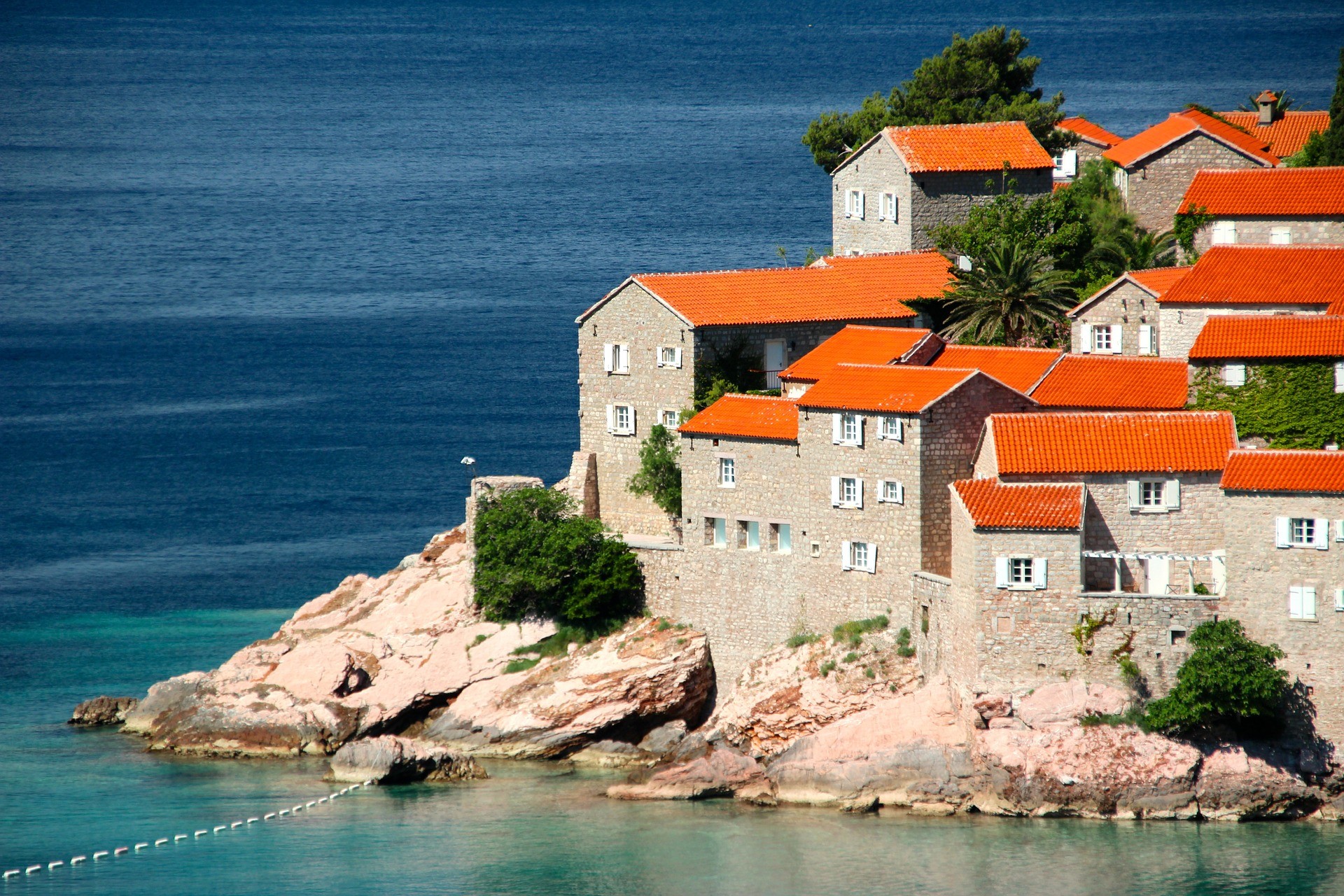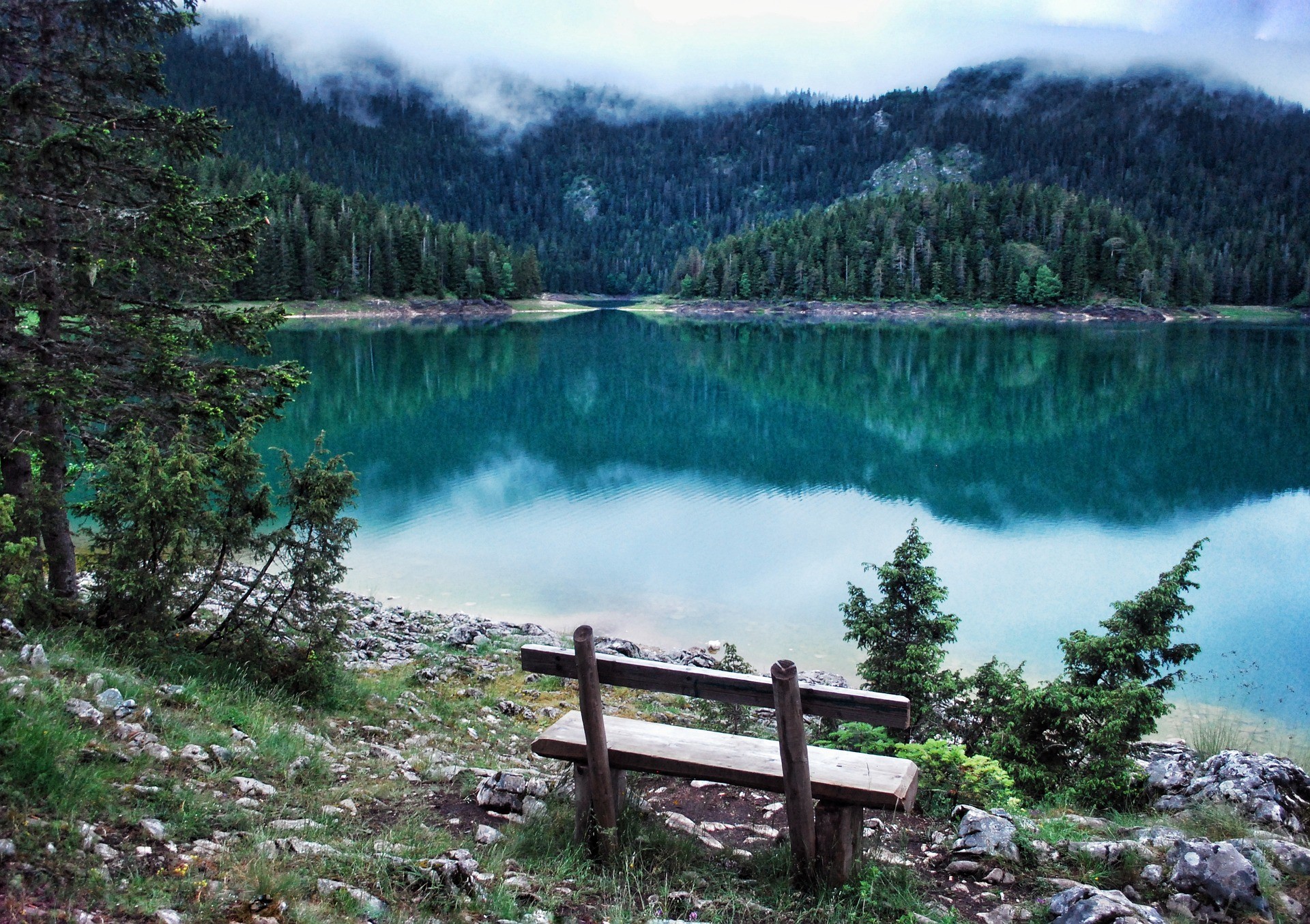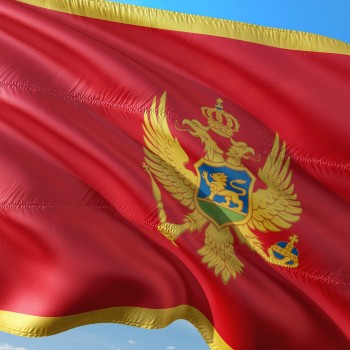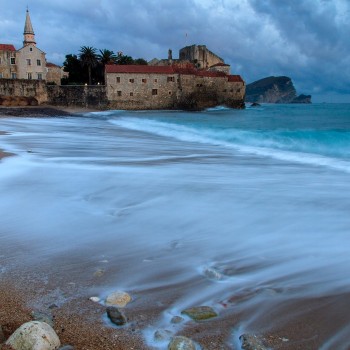Montenegro
Montenegro
Capital city description
Podgorica is the capital and largest city of the Republic of Montenegro. The town is close to winter skiing centers in the north and seaside resorts on the Adriatic Sea. It is also the nation's administrative center and its economic, cultural, and educational focus.
Podgorica is home to many Montenegrin cultural institutions and events. It hosts the Montenegrin National Theatre and several museums and galleries. Podgorica is also host to the City Theatre (Gradsko pozorište), including the Children's Theatre and the Puppet Theatre. Most of Montenegro's higher education establishments are in Podgorica, including the University of Montenegro, the country's most significant university.
Climate
The climate on the Montenegrin coast is typically the Mediterranean, with hot, dry summers and moderately cold winter months.
The maximum temperatures in summer reach an average of 25 to 30 degrees Celsius. During the winter, the temperatures drop to mild lows between 4 and 11 degrees.
Spring: March to May
Summer: June to August
Autumn: September to November
Winter: December to February
Languages spoken
- Montenegrin is the official and widely spoken language in Montenegro.
Fun/Fascinating Facts
- Montenegro is the land of black mountains; as the name suggests, Montenegro is named for its mountains. With its origins in Italian, ‘monte’ means mountain and ‘negro’ means black, thus Montenegro or Crna Gora as it’s called in Montenegrin.
- Montenegro boasts 117 beaches along the Adriatic coast, mountain ski resorts, the medieval city of Kotor, and other cultural sites.
- Montenegro’s Lake Skadar is one of the most extensive bird reserves in Europe. It’s home to over 270 bird species and is a vitally important stop for migrating birds. Among the most prevalent on the lake are the Dalmatian Pelicans.
- Crvena Stijena by the village Petrovici near Niksic is one of Montenegro’s oldest cultural and historical monuments. The cave is unique because of the numerous cultural artifacts it contains.
- The beautiful land of Montenegro is a famous tourist destination.
Unique Customs/Traditions
- The traditional costume of women in Montenegro usually was made of a shirt, woolen dress, skirt, apron, belt, scarf, and socks. As alternative clothing items, they used kamizola (a certain kind of a vest), Koret (short coat usually brown), zubun (a sleeveless garment), curdija (jacket-short-sleeved or sleeveless), and caftan. As for the footwear, most often, they had opanak (peasant shoes), pasamage, and sometimes even shoes. The male shirt had a collar and a slit on the chest closed with buttons. The shirt was drawn in the pants, and most often it was a white shirt) rarely could you find a Montenegrin in a colorful shirt). The shirt was an obligatory part of the Montenegrin male costume, and at the festivities, it was always tied.
- The Montenegrins have a very relaxed attitude towards life, choosing to relax first and deal with whatever needs to be done later.
- Montenegrins possess a deep love and respect for a family that can often get in the way of personal development. Montenegrins are proud, generous, welcoming, and open to everyone.
- Tipping at restaurants is becoming more common; smaller places will expect to keep the small change, and posh restaurants to receive up to ten percent of the bill. Despite an official smoking ban, Montenegrins still do much of their breathing through small, tobacco-filled cylinders: non-smokers may have difficulty avoiding the fumes.
- The traditional dishes of Montenegro’s Adriatic coast and heartland region have a distinctly Italian flavor. Stuffed capsicums, meatballs, japraci, Italian-style bread, cheese, soups, and stews are popular in these regions. Pilav, pita, kebab, sama, etc., are some Levant and Turkish dishes consumed in Montenegro. Tulumba and baklava are Turkish sweets that are also a favorite. Hungarian dishes like goulash, satarash, etc., and Croatian desserts are also eaten in Montenegro.
Popular universities
| Name | Description | |
|---|---|---|
| University of Montenegro ( Univerzitet Crne Gore) | University of Montenegro ( Univerzitet Crne Gore) is a non-profit public higher education institution located in the small city of Podgorica, founded in 1974. This institution also has a branch campus in Niksic and Kotor. The University of Montenegro offers courses and programs leading to officially recognized higher education degrees such as bachelor's degrees master's degrees in several areas of study. The university comprises 19 faculties in 4 cities and three scientific research institutes. Montenegrin is the official and widely spoken language in Montenegro. | |
| University of Donja Gorica (Univerzitet Donja Gorica) | The University of Donja Gorica (Univerzitet Donja Gorica) is a private university located in Donja Gorica, a suburb of Podgorica, Montenegro, established in 2007. It offers courses and programs leading to officially recognized higher education degrees such as bachelor's degrees master's degrees in several areas of study. The University comprises the following 13 faculties: Faculty of International Economics, Finances and Business, Entrepreneurship, Management, and Business, Faculty of Legal Sciences, Faculty of Information Systems and Technology, Humanistic Studies, Diplomacy, Security, Communication Studies and Media, Faculty of Arts, Polytechnics, Faculty of Sports Management, Faculty for Food Technology, Food Safety and Ecology, Faculty of Design and Multimedia, Graphic design, Fashion design, Faculty of Culture and Tourism, Chinese studies, Faculty of Applied Sciences, Applied Psychology, Applied Mathematics, International Hotel Management, English Language and Literature The Centre for Foreign Languages is also a part of the University. | |
Festivals & Events
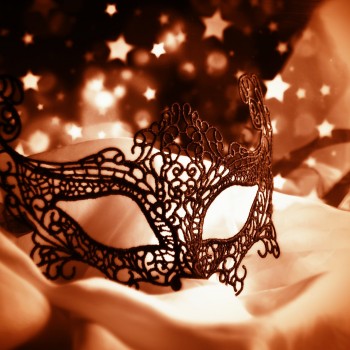
Kotor Winter Carnival
Date: February
Kotor Winter Carnival is one of the most festive events in Montenegro, kicking off every February with masked balls for adults and children. It gathers together people from Kotor, Montenegro, and Europe.
Theaters put on traditional shows, concerts are held in the streets and venues, restaurants offer exceptional local cuisine, and the streets throng with costumed revelers enjoying performers, fireworks, and parades.

Fascinida
Date: 22nd July
Fascinida festival celebrates the founding of Our Lady of the Rocks, the manufactured island church that is centuries old. Every 22nd July, a convoy of local barkas, small fishing boats, sets out decorated with poplar branches.
They row along the length of the town, accompanied by local Cappella singers, and out towards the island. The men from every family row their boat to the island while the women wave them from the shore.
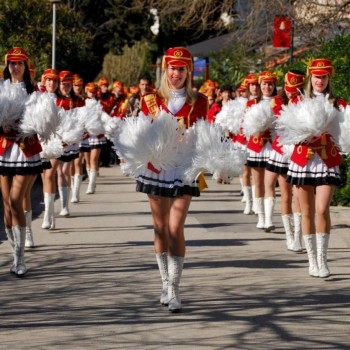
Mimosa festival
Date: March
Mimosa festival marks the celebration of the vibrant spring after the long dark winter days are over. The festival’s highlights include a traditional parade of marching girls and a brass band and a costume parade through the town.
Along Baosici’s shores, free barbecued fish and wine are handed out while traditional Dalmatian klapa singers sing of love and the sea. This festival is a sign of hope for a new and better life full of life, laughter, and happiness.
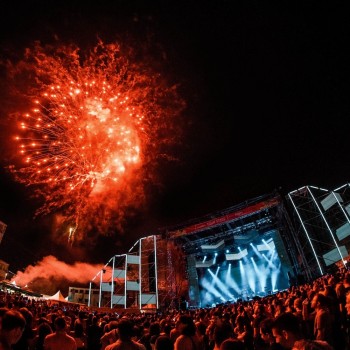
Sea Dance Festival
Date: July
Sea Dance Festival is Montenegro's leading music festival in July each year. It is a three-day music festival which is very famous among locals and tourists.
It attracts over 80,000 people from all over Europe and nearby continents. This festival is all about celebrating Montenegro's rich musical culture.
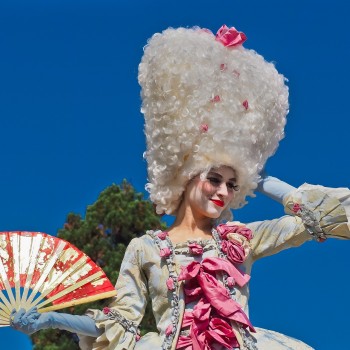
Budva Carnival
Date: May
Budva Carnival is a unique, lively three-day event that draws people from different parts of the country. It is a family-friendly festival that features special puppet shows and masked balls for kids. Unique costume parties, festive parades, and open-air theater tr shows are the highlights of this fantastic festival.
The parade also includes a competition, with groups from Italy, Slovenia, Turkey, Macedonia, Serbia, Bosnia, and Herzegovina competing for the best costume.
.jpg)
Lake Fest
Date: August
Lake Fest is Montenegro’s most incredible rock music festival. Held every summer at Lake Krupac in Niksic, It attracts thousands of people for a three-night rock fest featuring some best rock music that will give you chills down the nerve.
The festival features renowned local and international artists presenting retro and modern rock bands. Their heart-pounding upbeat music will make you groove even when you don’t feel like it.
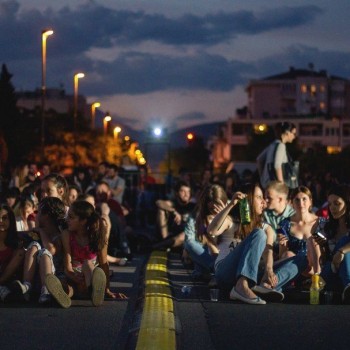
Montenegro Film Festival
Date: August
The Montenegro film festival has been celebrated for 30 years. It is held in August in the stunning surroundings of Herceg Novi's old town each year. The festival shows feature films and documentaries worldwide. It features some of the best movies and documentaries from all over the world.
There are cafés and live music throughout the town after the showings. The main theatre is an ancient fortress called the Bloody Tower overlooking the Bay of Kotor.
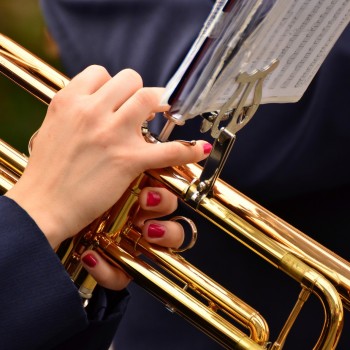
Perast Music Festival
Date: July
Perast Music Festival is an annual music festival that features internationally-known singers, musicians, instrumentalists, and orchestras.
Concerts are held in venues all over the stunning town of Perast. The event attracts many overseas music lovers visitors worldwide.
Attractions / Top Sights
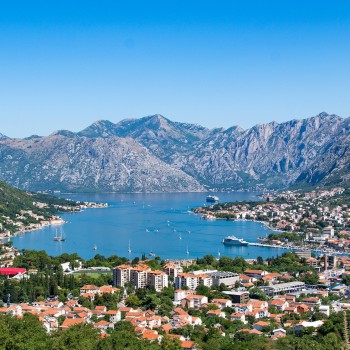
Kotor's Old Town
When to visit: April and May or September and October
Kotor's Old Town is one of the Adriatic coast's best-preserved fortified medieval towns in Montenegro. Distinctly Venetian in its style, Kotor sits at the edge of the brilliant blue Bay of Kotor surrounded by dramatic, soaring mountains.
The Cathedral of Saint Tryphon located in the city is known for its carved stone altar, an excellent example of the kind of stonemasonry the town was famous for during the Middle Ages. Due to its uniqueness and exceptional beauty, the city gained its top list as the number one city to visit worldwide.
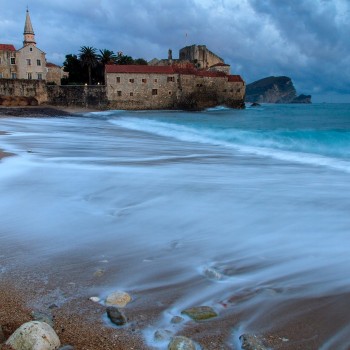
Budva
When to visit: Between June and September
A lively town of Montenegrin, Budva sits in the center of the Adriatic sea. It boasts a dramatic Old Town, surrounded by beautiful beaches and several important cultural institutions, including the childhood home of Serbian writer and politician Stefan Mitrov Ljubiša.
Nevertheless, the city’s vibrant nightlife makes Budva the most famous place to visit in Montenegro. The town is packed with restaurants, bars, and boutiques. The town museum and citadel show off Budva’s ancient artifacts, while a five-minute walk along a coastal path leads to idyllic Mogren Beach.
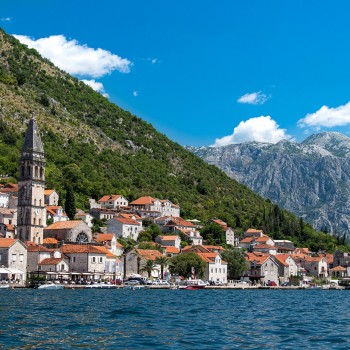
Perast
When to visit: Between June and September
Perast is undoubtedly one of the most beautiful places in Kotor bay by its history. Located to the northwest of Kotor and sharing the same gorgeous fjord-like bay, pretty Perast is a small town notable for its stone-crafted villas and historic churches.
Two of the city’s scenic chapels are situated on tiny islets, Our Lady of the Rocks and St. George.
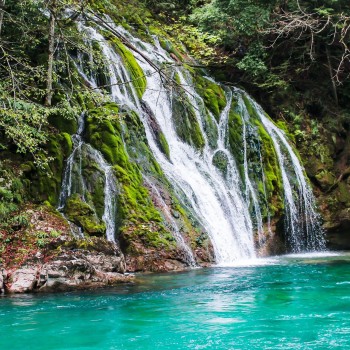
Tara Canyon
When to visit: Between June and September
Tara River results from two rivers in the Komovi mountains in Montenegro - Opasanica, and Veruša. Known as the “Tear of Europe,” the Tara River is 158 km long, has 14 different rivers flowing into it, seven from each side, and 69 rapids on that path. In some parts, the walls of the Tara Canyon are 1.333 m deep, making it the second deepest canyon in the world after the Grand Canyon on the River Colorado, but the first canyon in regards to its beauty.
Another exciting feature is the cascades. The loud noise of the cascades can be heard even in the upper parts of the canyon. There are over 40 cascades on the Tara river, the most crucial being Crna Vrela, Bijela Vrela, Djavolje Lazi, Sokolovina, and Bijeli Kamen.
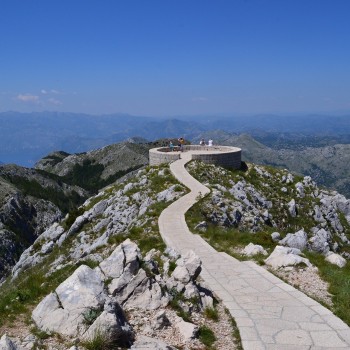
, Mount Lovcen
When to visit: Between June and September
One of the most impressive natural features in Montenegro, Mount Lovcen, is capped by two mammoth peaks of granite. Part of the Mount Loven National Park, the mountain-inspired Montenegro’s name, symbolizes national pride. With its circular viewing platform, the nearby Njegoš Mausoleum is a destination for sightseers and those who want to pay their respects to the poet and philosopher buried there. Petar II Petrović-Njegoš is beloved for writing “The Mountain Wreath,” Montenegro’s national epic poem.
Today this area is Lovćen National Park. It is a day retreat and getaway vacation spot for Montenegrins. It has much to offer for the whole family. In addition to an adventure park, there is a large area where families and friends can enjoy a cookout. Fixed tables and a grilling area make this a good getaway spot. Public toilets are available as well. You can even set up camp, stay a few days, and enjoy nature and cooler summer mountain weather.
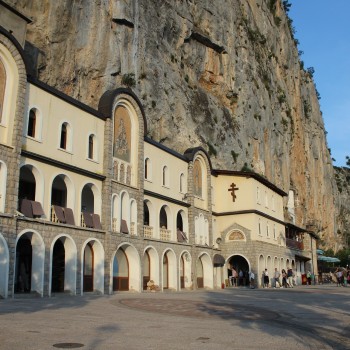
Ostrog Monastery
When to visit: May to September
Built in the 17th century, Ostrog Monastery is the country’s most unique architectural site and a prominent Christian pilgrimage destination, situated high up in the large rock of Ostroška Greda. The entire monastery was carved out of a cave in a nearly vertical mountain cliff with only the whitewashed façade left visible.
The monastery contains two inner cave churches adorned by frescoes, painted directly on the rock wall. The Ostrog Monastery is one of the most-visited attractions in Montenegro. It’s visited by up to a million tourists and pilgrims every year
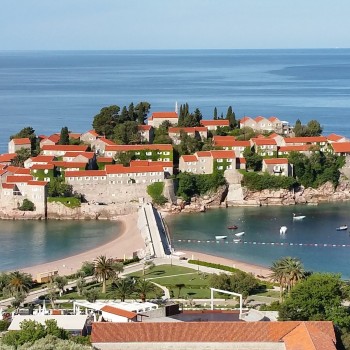
Sveti Stefan
When to visit: April to July
A stunning small islet and 5-star hotel resort on the Adriatic coast of Montenegro, Sveti Stefan has been a favorite place for royalty and tourists since the 1930s. The resort is known commercially as Aman Sveti Stefan and includes part of the mainland, where the Villa Miloče is located.
The elegant Aman Sveti Stefan resort has 58 guest rooms, cottages, and suites, including eight suites part of the Villa Miločer. It’s the perfect spot to enjoy an afternoon swim followed by a dinner of fresh seafood while watching the sunset over the Adriatic Sea.
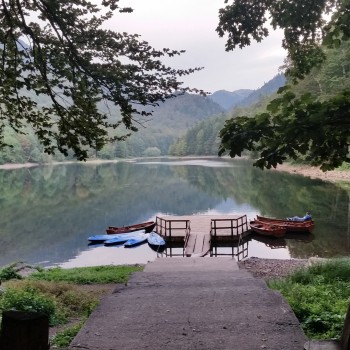
Biogradska Gora National Park
When to visit: May to October
When to visit: https://whc.unesco.org/en/tentativelists/5569/
The Biogradska Gora National Park features stunning lakes, swift-running streams, lush green meadows, and one of the few remaining ancient forests in Europe. Biogradska Gora offers the most incredible diversity regarding flora and fauna, including 500-year-old trees.
The most significant part of the National Park is the virgin forest reserve, a cover of 16 sq km, where a strict protection system has been established. That is one of the last virgin forests in Europe. It is located in the valley of Biograd and Jezerštica Rivers, surrounding Biograd Lake, where the beauty of the ancient forests reflects in their waters.
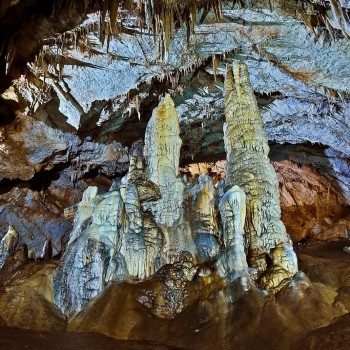
Lipa Cave
When to visit: May
Situated near Cetinje, Montenegro, Lipa Cave is one of the enormous caves in Montenegro. It is a karst cave with about 2.5 kilometers (1.6 mi) of passages and halls. It's the first cave in Montenegro which opened for tourists.
Lipa Cave is an excellent attraction for families. A miniature train takes visitors to the cave entrance through the countryside full of wild figs and pomegranate trees.
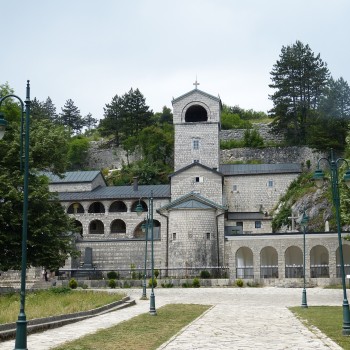
Cetinje
When to visit: May to October
Once the capital of Montenegro, Cetinje is a jewel of Montenegrin cultural and historical heritage. Its scent from the architecture from the 18th and 19th centuries come from this small city's rich greenery. Cetinje is famous for the many European embassies built when the town served as Montenegro's capital.
Today, the elegant mansions constructed in the Continental architectural style have been converted into museums, academies, and administrative buildings. Other interesting sights include the 15th-century Vlah Church with its fence made from Ottoman rifles and the Cetinje Monastery with its Early Christian Era relics collection.
















